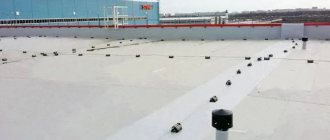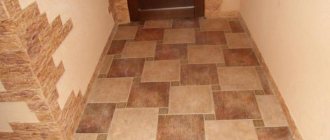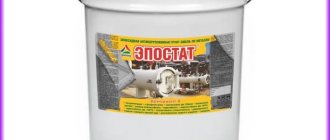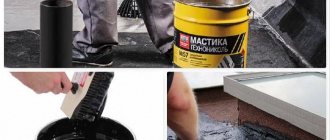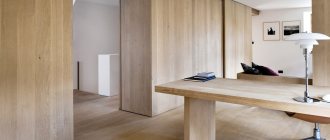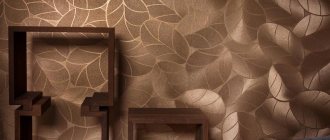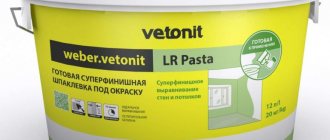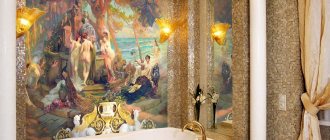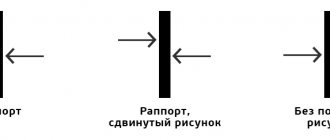A galvanized iron roof is durable, reliable and inexpensive, which is why it is very popular. It is worth noting that recently the demand for galvanizing is not what it used to be. Mainly due to the complexity of designing folded seams, as well as the unpresentable appearance.
More successful competitors, the main of which are metal tiles and corrugated sheets, are significantly superior to iron roofing in beauty, and in addition, they have a protective polymer coating.
However, due to the difference in price for roof installation, galvanization continues to remain competitive.
A little about the material
Sheets of galvanized iron can be of any size - height, width, thickness; they are easy to drill, cut and weigh a little, which makes installation much easier.
When installing a metal roof, elements such as ridges and valleys can be cut from existing iron, which will save money.
In light of increased attention to environmental protection, the environmental friendliness of the material is also important - it is well known that galvanized iron does not emit toxic gases and is not dangerous to nature and human health.
The affordable price, coupled with the above qualities, makes metal a very attractive option, and the sound of drops on the roof and the need for painting are relatively minor disadvantages.
Sheet dimensions
The width of each profile brand is standard, for example, C8 has a total width of 1200 mm, and profiled sheet C20 has a total width of 1150 mm. Any length of rolled metal is possible up to 12 meters. This is very practical if it is necessary to cover long slopes of 4 meters or more, since it allows you to avoid horizontal joints, which has a positive effect on the tightness of the roof. However, when the length of the slopes is 6...8 meters or more, it is not recommended to order corrugated sheets (especially with a low profile C20 or C21), since such a length will complicate the lifting of the metal onto the roof and there is a risk of deformation of the corrugation due to the large mass of the sheets. And transportation of long items will cost much more, since large-sized vehicles will be involved.
Consumption of galvanized iron
If possible, you need to take material in accordance with the parameters of the roof - the entire width of the slope - this is better than connecting a strip of two or several pieces.
However, this option is not always suitable for transportation. To calculate iron consumption, we measure the roof and calculate its area.
For a double standing seam, multiply the resulting value by a factor of 1.5. If the roof is complex, then the coefficient may be higher.
We add 13 percent for waste.
If fastening will be done with self-tapping screws, then you need to calculate their number - per 1 sq. m requires 4 pieces, and with a large roof the amount is considerable.
Fastening elements must be galvanized and equipped with elastic gaskets for greater tightness.
Roof covering technology
Galvanized iron sheets are suitable for roofs with a slope of more than 20 degrees.
Using a level, we check that the beams are laid horizontally. Roofing iron will “show” flaws in the rafter system in all its glory, so the rafters must be installed and secured with high quality. Then the sheathing is done and the outermost wind board is fixed.
The sheathing will suit:
- solid - from edged boards;
- sparse - in increments of no more than 20 cm.
Areas of cornices, roof overhangs, valleys - if present - require the installation of exclusively continuous flooring.
It is best to lay the iron covering on a layer of roofing felt.
Installation of iron sheets
Cutting and bending are inexpensive; you can contact a metal processing workshop.
When erecting a roof yourself, the iron is cut with electric shears or metal shears into sheets of the required length and width.
Finished metal sheets should be given the maximum possible evenness, getting rid of dents. The edges of the first sheet of the wind board are folded back to create a groove.
Next, you need to choose the installation method: using galvanized screws or rebated.
Self-tapping screws require drilling holes, which does not help improve the waterproofness of the roof; moreover, the sheets are attached with an overlap, so you need to purchase more material. As a result, this technology is not widely used.
Much more often, the seam method is used, which involves the creation of a special seam - a seam, with the help of which the sheets are fastened together.
And if you can cut metal without having any special skills, then you can’t do without them here.
High-quality folds are obtained using special electromechanical devices. The connection can also be made using hand tools.
To create a fold you will need:
- a table or workbench with a corner attached to the edge;
- steel hammers with flat side cheeks;
- wooden mallet;
- special comb bending device;
- ruler and caliper.
There are folds:
- recumbent - for transverse connections of sheets;
- standing – for longitudinal connections.
Bends can be:
- one – single fold;
- two – double fold. It is considered the most reliable and is used most often.
In order to make a connection, markings are first made.
The edge of the first sheet is bent upward using a comb bender; on the second sheet the same operation is repeated, with the only difference being that the height of the bend should be twice as large.
Then the seam is filled - the resulting ridge is just a standing seam.
The sheets are fastened to the sheathing using clamps - iron strips cut from leftover metal. The flooring is made parallel to the ridge, starting from the edge of the roof.
DIY metal roof: installation features
Seam roofing is a type of covering whose installation should be entrusted to professionals. And not for ordinary roofers, but for those teams who know how to work with seam metal roofing. This is due to many nuances, as well as the need for special equipment that will facilitate the installation process.
Today on the market you can find ready-made metal sheets with curved edges for rebates of a standard length of 2.5 m or more. After purchasing, all that remains is to connect them together. However, this method is not the best.
It is more preferable to purchase rolled galvanized steel, for example, copper or pural. At the site, you need to cut sheets of the required length, which would correspond to the length from the ridge to the eaves + 50-100 mm, which will be needed to create a rebate under the eaves overhang and in place of the ridge. You can quickly wrap the edges of the sheet on a special folding machine, and then use them for further joining.
Arrangement of sheathing and rafters for a metal roof
Arranging a truss structure for a metal roof is no different from traditional technology. Very often there is no point in installing rafters, since the roofing material is quite light.
As for the lathing, it must be done in increments of 200-250 mm from timber 50x100 mm or 50x50 mm. This frequency is required in order to prevent deformation of the roof metal during operation, installation and repair. The roofer's feet should step on the place where the sheathing is located, and the metal will not deform or sag.
For a flat roof, the sheathing must be made continuous. The ridge consists of two boards, whose two edges converge into one point. It’s better to make the cornice solid, from three or four boards knocked together.
Features of metal roof waterproofing
To minimize the formation and accumulation of condensation on the back side of the material, the roof must be waterproofed. If it is insulated, then a sheathing needs to be nailed onto the rafters, and a special waterproofing superdiffusion membrane is attached on top, which does not allow water to pass in, but at the same time releases steam from the inside. It should be secured from bottom to top. The joints must be made with an overlap of 100-150 mm and glued using construction tape. The film must be fastened with a slight slack so that in severe frosts it does not break due to strong narrowing and tension between the fastenings. At the same time, it can be secured with dowels with a wide head and self-tapping screws.
A counter-lattice is attached on top of the waterproofing membrane with the step indicated above. Thus, two ventilation gaps are formed: one between the waterproofing and the insulation, and the other between the roofing material and the waterproofing.
Fastening a metal roof
Installation of roofing iron always begins with the installation of crutches. They are attached to the cornice in 70 cm increments, they are responsible for holding the metal picture, otherwise they may fall during installation. Wooden crutches can be replaced with a metal corner 50-60 mm (attached along the eaves overhang). This method is even more convenient, since there is no need to align the crutches so that they are located exactly on the same line.
The first painting goes up with the finished folded edges. It is laid with the front so that an overhang of 40-50 mm is formed. It is necessary to align the sheet so that there is a 30 mm edge to cross the ridge (the edge on the opposite slope should be 60 mm).
On the side where the second sheet of metal is applied, clamps are attached. It is secured to the sheathing using a 4x50 mm self-tapping screw where it overlaps with a sheet of metal. As a result, it should look like this: the curved edge should be located next to the vertical edge of the clamp (they are fixed in increments of 500-600 mm).
A second picture is raised and placed next to the first. In this case, its folded edge should fit onto the folded edge of the first picture. In the event that the edges of the paintings are smooth and not self-latching, then the edges of the second and first paintings should be in close proximity (a clamp is clamped between them). Then, using roofing frames and other professional tools, a seam is made.
As a rule, this takes two passes with a hand tool, in both directions. Moreover, the clamp is also bent inside the fold, as a result of which the connection is as strong as possible.
Attention! If the house is operated near bodies of water or in a humid climate, then it is recommended to seal all connections using a metal roofing sealant (for example, Tytan sealant). It is much more convenient if you apply it to a strip of fiberglass, which will have a width corresponding to the width of the folded edge, and glue these strips to the metal before making the folded joint.
Kleimers are also nailed from the second edge of the second picture, after which the third picture is raised, and the entire production is repeated.
The wind side strip is attached where the paintings adjoin the gables, and then the upper side strip is attached. These elements can be attached either to seam joints (a rather labor-intensive process) or with self-tapping screws.
Once you have laid and secured all the paintings on both slopes, a ridge (ventilated or non-ventilated) is made. You can see how they are made in the photo. Also, pay attention to how the ridge ventilation can be done.
At the final stage, eaves overhangs are made and gutters are installed to drain rainwater. The edge of the picture turns down, allowing water to drain easily.
Operation of an iron roof
To extend the service life of the iron coating, it is necessary to paint it.
If painting is not being done for the first time, the previous layer is carefully removed, dirt is removed from the surface, it is also important to degrease the roof for better adhesion.
For coloring you can choose:
Mechanical damage negatively affects the effectiveness of the roof. Small holes and cracks can be soldered or a special sealant can be used.
Ice or icicles should be removed from the surface with caution.
The most vulnerable places where traces of corrosion most often appear are the folds. Every spring, it is advisable to inspect your roof for corrosion stains or other flaws.
If all operating rules are followed, an iron roof will last 20 years or more.
Construction of houses
Finishing a roof with roofing iron is a rather complex process. The final result of the resulting coating directly depends on compliance with the material installation technology. We will consider further how to cover a roof with roofing iron with your own hands.
Table of contents:
Types, features and advantages of roofing iron on the roof
Roofing iron refers to materials for the manufacture of which rolled metal is used. There are a large number of forms of roofing iron:
Both polymer and galvanized coatings are applied to the metal surface, protecting it from external irritants.
The popularity of using roofing iron is explained primarily by its low cost and excellent performance characteristics. The production of certain types of iron is controlled by special documents, so the thickness of black roofing sheet material should not be less than 0.3 mm and more than 0.8 mm. To protect the metal from corrosion, it is treated with zinc on both sides.
In relation to the type of zinc coating of iron, it is:
- iron, the thickness of the zinc coating is up to eighteen microns;
- material, with a zinc coating thickness of up to forty necron.
Please note that the type of coating and its thickness directly determine the quality of the product; the thicker the layer of zinc applied to the surface, the longer the iron will be protected from corrosion.
For the production of roofing iron, high-quality carbon steel and cold pressing method are used. Galvanizing is done in different ways, and zinc of different categories is used. In order for the coating to adhere better to the surface, substances in the form of aluminum and lead are combined with zinc. Thus, the coating becomes more durable, smooth and, most importantly, not subject to corrosion.
Galvanization is the simplest and most reliable option that protects the metal from corrosion. To apply the layer, the previously prepared metal is immersed in a pre-molten zinc composition. Depending on the thickness of the resulting layer, the coating can be first-class or second-class. Material that belongs to the first class has a higher cost, but at the same time, its service life is more than 25 years. Second class material is cheaper, although it will serve its owner for no more than ten years.
In addition, roofing iron is coated with a combination of zinc, cerium, lanthanum and aluminum, a coating called galfan. The iron on which this coating is applied tolerates mechanical damage well, resists corrosion and is resistant to deformation.
How to cover a roof with iron
- 1 Which type of roofing iron should I choose?
- 2 Stages of installation of a galvanized steel roof
- 3 Installation of corrugated sheets
- 4 Photos
- 5 Videos
The choice of roofing material takes into account the individual characteristics of the building: the angle of the roof, the solidity of the foundation, and the general architectural style. When choosing a finish, sheet metal is often preferred. This material guarantees the durability of the roof, is light in weight and does not weigh down the structure; processing and installation of metal is not difficult, which speeds up the entire process of installing the roof. In this article we will look at how to cover a roof with iron.
Repair features
Damaged metal tile sheets can be repaired. It is important to take into account a number of features:
- To carry out repair work, you need to use special tools and auxiliary equipment.
- When replacing a roof, it is important to consider the complexity of the structure.
- Safe installation of metal roofing sheets can only be done with insurance.
- To properly repair the roof, it is important to strictly follow the sheet laying technology.
If there are a large number of minor damages on individual metal tile elements, the sheet must be completely replaced.
Roof repair (Photo: Instagram / irkkrov.ru)
What type of roofing iron should I choose?
Galvanized steel
Metal sheets intended for roofing work differ in appearance and coating.
- Black iron - sheets or rolled steel without coating, is resistant to mechanical stress, but does not tolerate moisture. This is a budget material, but for long-term operation it requires an anti-corrosion coating.
Old black metal roof
- Galvanized steel – has a smooth surface, is resistant to precipitation due to the protective layer of zinc, and is indispensable when installing a seam roof.
- Profiled metal is galvanized iron that has been profiled to create stiffeners. It has a trapezoidal, wavy or rectangular cross-section. After treatment with a polymer coating, the anti-corrosion and aesthetic properties of the material increase significantly.
Using non-ferrous metal coating
Alloys of copper, aluminum, zinc and titanium are used in the production of metal roofing. Copper meets all basic construction requirements - it is resistant to corrosion, does not peel, and does not require special care, which leads to a significant reduction in operating costs. Thanks to the natural reddish tint of copper, the roof will look not only original, but also elegant. The only drawback, along with the many advantages of this coating, is the high cost.
Due to the light weight of aluminum, any type of metal roof can be constructed from it without special selection of a specific sheathing (read: “What are the types of aluminum roofing - advantages and disadvantages”). Aluminum metal tiles are durable, resistant to atmospheric influences, and retain their original color throughout the entire period of use.
When comparing zinc-titanium alloy and copper, the advantages of the first are obvious. The coating made of this environmentally friendly material does not rust, and its service life exceeds the service life of its analogues. Prices for zinc-titanium are 2-3 times lower than those offered for copper.
Stages of installation of a galvanized steel roof
Roofing made of galvanized steel
Before covering the roof with iron, it is necessary to make a strong sheathing that will prevent deflections of the metal. The basis for the iron sheets is wooden beams located 20 cm from each other, a continuous sheathing of edged boards or a step-by-step sheathing of boards nailed at a distance of 10 cm.
You can connect sheets with galvanized iron by laying them overlapping and securing them with nails with a special gasket, or in a more labor-intensive and reliable way - folding. To complete the work you need:
- wooden mallet;
- metal scissors;
- workbench for preparing paintings;
- metal hammer;
- comb bender;
- roulette;
- a mixture of drying oil and red lead.
Before starting work, iron sheets are primed with a mixture of drying oil and red lead to increase corrosion resistance. The dried iron is cut into pieces of the required size, using metal scissors (a grinder is strictly prohibited). The seam method reliably protects the joints from leakage. It is a connection of adjacent sheets of iron into a lock, made by bending the edge.
Types of recumbent seam connections
For horizontal connections, recumbent seams are made. They are made using special machines or on workbenches using a hammer and mallet. Draw a line at the edge of the sheet and bend the edge using a mallet; for this work you will need a workbench with a metal corner. On another sheet, the edge is bent several times until a U-shape is created. The joint is sealed and bent close to the metal sheet. In this way, blanks are formed for laying on the roof; they are called pictures.
On the roof, all the paintings are connected using longitudinal standing seams. In their manufacture, a comb bender is used. Before fastening, the position of the sheets in the vertical plane is checked. It is recommended that the length of the workpiece be equal to the size of the roof slope. The paintings are laid in rows from the ridge to the gutter. A steel strip is used to seal the lying seams.
In places that require special strength of the seams, a double fold is used. It is made by folding the edges of two sheets, followed by simultaneous folding. The rebated seam is installed with a bend towards the eaves, this allows water to flow freely along the roof. The paintings are attached to the sheathing with metal clamps.
Collar for the chimney tube
The most difficult stage is the installation of a collar for the chimney tube. It is pre-made according to the shape and size of the pipe. The collar is connected to metal sheets by standing seams.
To understand how to properly install a roof using a seam joint, you should watch a video with recommendations from professionals.
Features of roofing with profiled sheets
- When deciding on the size of the corrugated sheet, choose one that is equal in length to the roof slope; if it is large, focus on ease of transportation.
- When counting the number of sheets, take into account the angle of the roof; if it is within 15 to 30 degrees, an overlap of up to 20 cm will be required.
- Before installing the corrugated sheet, a waterproofing film is laid. It is attached with brackets to the rafters. Counter slats are installed on top of it, providing clearance with the metal sheets.
- The polymer coating of the corrugated sheets should not be damaged during transportation and installation; this will lead to the loss of the anti-corrosion properties of the material.
Brands of corrugated sheets differ in strength and wave height. To install a reliable roof, two brands are used:
- NS - for roofs with a significant slope angle that do not experience high loads;
- N - used for permanent roofing, characterized by additional stiffening ribs.
Installation of corrugated sheets
Installation of corrugated sheets on the roof
Corrugated sheets are easy to process; for installation and fastening you will need a hacksaw and a screwdriver. Lay the sheets from bottom to top, starting from the right end. Solid profiled sheets are pre-fixed with one self-tapping screw and laid along the entire length of the roof. After alignment along the eaves, final fastening is carried out using roofing screws, the heads of which are selected according to the color of the polymer coating. They are screwed horizontally with a screwdriver into every second wave, vertically at the distance of the sheathing step. The upper and lower parts are secured with a self-tapping screw into each profile.
When using several rows of corrugated sheeting, their transverse joints are connected with an overlap of at least 20 cm and coated with silicone sealant.
When working with profiled iron, care should be taken to prevent damage during movement. It is recommended to wear soft shoes or make a wooden deck on the finished roof area.
Metal roof A
properly installed iron roof will provide reliable protection for many years; this high-quality coating will withstand the influence of precipitation and wind. The shiny or colored surface of the metal sheets used will complement the architecture of the building.
Snow guards on seam roofing
Installation of seam roofing
Steep roof slope
Copper roofing
Galvanized roof: advantages, disadvantages and installation technology
For centuries, people have been concerned with the question of how to cover the roof of a house in order to turn it into a reliable fortress that protects from atmospheric disturbances. If at first natural materials were used, for example, straw, moss, reeds, and ceramics in various forms, then later a more reliable coating appeared in the arsenal of builders - metal.
Although the building materials market has changed very quickly, even today, galvanized steel roofing is considered the most practical, durable and reliable solution. In this article we will talk about what types of coatings based on galvanized steel there are, how they differ, what their advantages and disadvantages are, and how they are installed.
Video for DIYers
A video collection will help you consolidate information about the difficult task of constructing flat roofs:
We hope that the information we presented will help future roofers who decide to practice with their own hands in constructing a not-so-simple design.
There are many conditions for the proper construction of a flat roof, but they must be observed for ideal operation and long service. Information about the intricacies and specifics of constructing a flat roof will help not only determined craftsmen, but also owners of country estates who resort to the services of third-party construction organizations.
Types of galvanized roofing
Galvanized steel is often used in private, commercial and industrial housing construction as a roofing material. This coating is distinguished by its affordable price, fairly light weight, long service life, and high reliability.
If previously roofers had at their disposal only sheets of rolled steel, which were joined using a seam method to create a sealed layer, now the choice of materials based on this metal is much wider. The most common derivatives of roofing steel are:
- Roofing steel . This material is a roll of rolled galvanized steel, from which roofing pictures of the required size are made. The paintings will be connected to each other using a fold joint, that is, the edges of the large fold are folded over the small one using a sheet bender. This technology allows for a strong, durable coating, in which, if necessary, it is very easy to repair individual panels. In addition, seam joining of sheets reduces material consumption and reduces the number of horizontal seams.
Note! Over time, metal manufacturers are expanding the range of steel roofing coverings. Galvanized iron for the roof can be in the form of bitumen tiles, that is, metal tiles coated with bitumen, or modular metal tiles, that is, sheets with a small cross-section.
The evolution of metal roofing
One of the oldest metal roofing materials is seam, which was widely used in pre-revolutionary Russia, and after that in the countries of the Soviet Union. With the development of machine tools, seam roofs were supplemented by roofs made of corrugated sheets profiled from galvanized steel. Metal tiles with a characteristic profile and polymer coating imitating piece ceramic tiles are a Finnish invention. Domestic metallurgical enterprises producing rolled metal products have mastered the technology of painting them, but have not gotten to the point of forming themselves. The first metal tiles appeared in our country in the 90s of the last century - the coated “roll” was produced by the Rautaruukki plant, and its subsidiaries profiled several types of ridges and additional elements. At that time, metal tiles were considered a premium material and a sign of wealth; they were used to cover “epoch-making” cottages made of Italian brick.
At the beginning of the 2000s, Russian metallurgical plants modernized their production, equipping it with powerful (up to two hundred thousand tons per year) lines for the production of galvanized steel coils with polymer coating.
The first national standard for painted coiled steel was issued in 2003 - GOST R 52146-2003 “Cold-rolled and cold-rolled hot-dip galvanized sheet metal with polymer coating from continuous lines. Technical conditions". An improved version, still in effect today, was adopted in 2017. This standard is focused on the raw materials from which not only metal tiles, but also other metal building structures are profiled.
Initially, demand for the new product grew at a high rate, up to 25% per year. As saturation progressed, these figures decreased, but even now more than half a million tons of rolled steel are processed annually into metal tiles and other roofing coverings. Modern collections of metal roofing differ in the type of profile, type of polymer coating and characteristics.
Advantages and disadvantages
Galvanized roofing is one of the most common types of roofing in private housing construction, but from the point of view of installation and operation technology it has its own characteristics. The disadvantages and advantages of metal-based coatings arise from the characteristics of the alloy used for their manufacture.
Experienced roofers note the following advantages of galvanizing:
- High strength . Materials based on galvanized steel are strong in themselves, and the additional stiffening ribs that they acquire during the molding process increase the load-bearing capacity of the coating. Therefore, galvanized roofs are characterized by high reliability even in regions with high snow loads.
- Affordable price . The cost of a galvanized steel roof is quite low. The price of one square meter of coating together with fasteners ranges from 500-1000 rubles.
- Corrosion resistance . Due to the zinc layer covering the steel, the material acquires unique anti-corrosion properties. By galvanic method, zinc is fixed on the surface of iron, so it does not come into contact with water.
- Durability . The service life of a galvanized steel roof is 30-50 years, since it is very difficult to damage mechanically. This indicator far exceeds the characteristics of even more expensive roofing coatings.
- A light weight . The weight of the coating is affected by the thickness of the sheet, but this figure is usually 4-10 kg/sq. m.
- Possibility of coloring . The appearance of a metal roof is easy to update, just remove the old paint with a steel brush and then apply a new coat of paint with a spray gun. The paint must be special.
Remember! Galvanized roofing sheet is considered one of the most practical materials, so it does not have many disadvantages. These include the low noise insulation ability of the material, which must be compensated for by additional sound insulation, as well as high thermal conductivity, which often leads to icing of the roof in winter without heating.
Material quality criteria
A galvanized roof can serve as reliable protection from weather conditions and low temperatures. However, the performance characteristics and service life largely depend on the quality of the source material. When choosing galvanization for roofing work, pay attention to the following indicators:
- Sheet thickness . Coatings with a steel base thickness of 0.4-0.8 mm are available on sale. According to the experience of professional roofers, the thickness of the product should not be less than 0.6 mm.
- Metal content of the zinc layer . The metal content of the zinc layer of steel-based roofing materials should be above 275 g/m2. The higher this indicator, the more reliable the anti-corrosion coating.
- Type of coverage . Paint, a durable polymer, or artificial rubber can be used as an external coating for roofing steel. It is better to choose products with polymer or bitumen protection, as they are more resistant to external influences.
- Coating thickness . The thickness of the outer metal coating ranges from 1.5-3.5 mm. For the most popular materials this figure is 2.5 mm. The thicker the coating layer, the more reliably it protects the metal from scratches and damage.
- Cut protection . There are coatings in which the sections of the sheet are also protected from corrosion, like the entire surface of the material; their use is preferable.
Important! The marking usually indicates all the necessary information: steel thickness, sheet width and length in mm. The price depends on the size of the product, but experienced craftsmen recommend ordering sheets cut to the size of your roof so that there are no horizontal seams during installation.
What is a flat roof?
Many people imagine such a structure being absolutely parallel to the ground. However, even a flat roof, despite its name, is at a slight slope - from 1 to 5 °. At first glance, this is completely invisible. However, during bad weather, the roof copes with its function perfectly - moisture flows freely from it and through the drainage system. A well-executed design completely removes precipitation, protecting the building from leaks and mold formation.
The main difference between a flat roof and a pitched roof is the absence of a rafter frame. The ceilings rest only on the walls of the building. A special feature of a flat roof is reinforced layers of thermal and waterproofing. This kind of cake is required, since the structure is constantly exposed to weather conditions, without having additional space underneath to prevent cold bridges and moisture penetration.
The main element of the roof is a strong, durable base. Most often these are reinforced concrete slabs. However, corrugated board, OSB, boards and plywood are also used. Materials for a flat roof are laid in several layers, forming a “pie”. Their number and sequence depend on the type and purpose of the roof.
Roof design requirements
To install a galvanized steel roof, certain conditions must be met. There are different installation methods, however, they all must take into account the operational and technical characteristics of the material so that the coating is durable, airtight, and durable.
Professionals recommend observing the following requirements when performing installation work with your own hands:
- The roof slope must be at least 8 degrees. With a minimum slope, in order to obtain a sealed layer, it is necessary to carry out additional waterproofing, strengthen the rafter system with additional elements, and also increase the overlap between the sheets.
- The overlap between the metal sheets must be at least 1 profile wave. The lower the roof slope, the greater the overlap between the sheets.
- The roofing sheets are fastened to the sheathing using clamps; you can also use special self-tapping screws with a press washer or rubber O-rings.
- The sheathing pitch is calculated so that it coincides with the distance between the waves of the material. However, it should be taken into account that each sheet must be supported by at least three slats.
- You can install the coating yourself. Installation is usually performed starting from the bottom row, from right to left. If the dimensions of the galvanized sheet coincide with the dimensions of the roof, then laying is done in one row. The slope is aligned using the first sheet.
- When installing galvanized blood, it is mandatory to install overhangs, gutters and snow guards made of the same material.
Important! Chimney and ventilation pipes lead through the roof to the street. The most difficult place to install is their passage through the roofing. This area, which is vulnerable to leaks, must be additionally waterproofed.
Repair work on the roof
Carrying out roof repairs, in which part of the roofing covering is dismantled, is considered a complex and expensive process, so many developers prefer local repairs without replacing sheets.
If there are minor damages (less than 5 mm), SNP for metal roofing suggests using acrylic or silicone roofing sealant for metal, as well as red lead lubricant. The mixture is applied in a thick layer with a regular spatula. You can also use Nicoband adhesive bitumen tape.
Construction and installation of a metal roof, detailed video:
Installation technology
The essence of the installation is to create a monolithic, airtight covering on the roof from sheets of roofing steel. Making aluminum with your own hands is quite simple, the main thing is to follow all aspects of the installation technology.
Those materials based on galvanization that have fixed dimensions, that is, corrugated sheets or metal tiles, are laid overlapping with spacing between the rows. Roll materials are connected with a seam connection. Before such work, it is important to understand what it is.
The roofing pictures have curved edges on the sides, which are needed to connect them together. You can bend the edges of paintings using a special machine or manually, which is naturally harder and takes longer.
The following types of seam joints exist:
- Single standing seam.
- Single fold fold.
- Double standing seam.
- Double folded fold.
Please note! It is much easier to lay galvanized corrugated roofing with your own hands, however, a seam roof provides the most reliable and durable coating, which, given the high quality of the original metal, can last hundreds of years, as evidenced by the seam roofs of ancient Russian churches and palaces. To simplify the installation process, you can use a self-latching seam roof, but it costs more than a regular one.
Characteristics
Roofing (tiles) must comply with the indicators and requirements specified in government documents:
- GOST 7566-94;
- GOST 14918-80;
- GOST 19904-90;
- GOST 24045-94.
The main parameters include:
- Diagonal difference.
- Thickness.
- Kosina cut.
- Standard length.
- Product width. There are two types of this parameter - useful and full width.
- Profile pitch.
- Profile depth.
- Sickling.
- Color.
It is important to pay attention to the coating that metal tile sheets have. The main types are polyvinylidene fluoride, polyurethane and polyester enamel.
